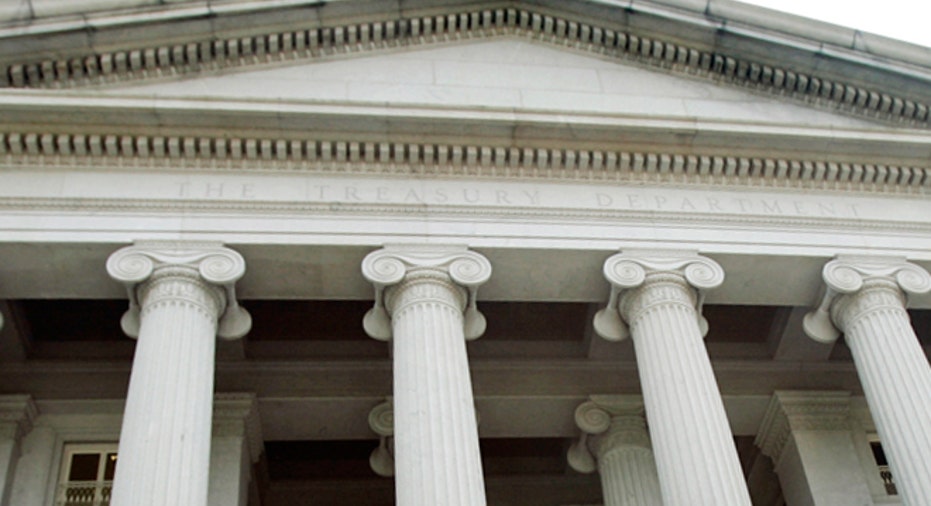U.S. Treasury Bonds Extend Rally Post Fed's Rate Decision

U.S. Treasury bonds extended their price rally a day after the Federal Reserve stood pat from ending an era of ultralow interest rate policy.
The Fed's decision to hold short-term rates near zero for a longer period failed to boost investors' confidence to buy riskier assets. Instead, the Fed's signal Thursday over concerns about the global economy, especially the slowdown in China, pushed down global stocks Friday and boosted demand for U.S. government debt.
"It was the first time the Fed was so specific about external factors" in influencing the U.S. monetary policy outlook and the "lingering issue of a rate increase" remains unresolved, said John Briggs, head of strategy for Americas at RBS Securities. "Investors are confused and concerned," which raised demand for bonds, he said.
An additional boost for Treasurys came from a broad rally in sovereign debt in Europe after European Central Bank Executive Board member Benoit Coeure said Friday that the bank has flexibility to extend bond buying beyond September 2016 if needed.
Lower bond yields in Europe make higher-yielding U.S. Treasury debt more attractive for buyers, highlighting investors' struggle to obtain assets that offer liquidity and income amid sluggish global growth, subdued inflation and continued uncertainty over when the Fed would start its first tightening campaign since 2006.
In recent trading, the yield on the benchmark 10-year Treasury note was 2.155%, compared with 2.215% Thursday, according to Tradeweb. Yields fall as bond prices rise.
The yield on the two-year note fell to 0.682% from 0.702% Thursday.
The two-year yield posted the biggest one-day drop Thursday since December 2010 following the Fed's decision. Yields on short-term notes--such as those maturing between two years and five years--are highly sensitive to changes in the Fed's interest rate policy outlook. The yield on the two-year note had closed Wednesday at a four-year high of 0.811%.
The Fed's ultra loose monetary policy since the financial crisis has pushed up Treasury bond prices to historically elevated levels and bond investors are concerned that the value of bonds may fall once the Fed shifts gear into a tightening mode. Higher interest rates typically make newly minted bonds more attractive and shrink the value of outstanding bonds.
Fed officials signaled that a rate increase before the end of the year is still on the table, but expectation in the financial markets is growing that the Fed might wait until 2016 to raise rates, which drove buyers into bonds.
Fed-funds futures, used by investors and traders to place bets on central bank policy, showed Friday that bettors see a 16% likelihood of a rate increase for the Fed's October policy meeting, according to data from CME Group. The odds of a rate increase at the December meeting were 42%.
Lower long-term Treasury bond yields are compounding expectations by investors and traders who predict that yields should rise this year to reflect an improving U.S. economy and a pending shift by the Fed on monetary policy.
These bets panned out earlier this year as the 10-year yield reached 2.5% in June, the highest intraday level since September 2014. The yield has since tumbled as worries over China's economy and stock market have stoked demand for haven bonds.
Another appeal to buy long-term bonds: tame inflation. The value of long-term bonds is less influenced by the Fed's short-term interest rate policy and more influenced by global growth and the inflation outlook. Inflation is the main threat because it chips away bonds' fixed return over time.
Lower commodities have reduced inflation expectations in the U.S. where the Fed has failed to push up inflation higher to its 2% target. China's surprise decision last month to weaken the Chinese yuan has sent many emerging-market currencies tumbling against the dollar, adding to disinflationary pressure and increasing the appeal of long-term Treasury bonds.
Some investors caution about buying long-term bonds, especially 30-year Treasury debt. If the Fed holds interest rates lower for longer than many investors expect, concerns may rise that the Fed could fall behind in combating inflation risks in the longer time, which could drive investors to sell long-term bonds.
Another risk: sales of long-term Treasury debt by foreign central banks to raise cash to support local economies, fight against capital outflow or support flagging economic growth.
China, the largest foreign owner of U.S. government securities, shed Treasury debt holdings in July. Traders and analysts said China has sold long-term Treasury bonds following its move to weaken the yuan in August, which had prevented bond yields from falling significantly amid a recent stock-market swoon.
"This is a short term concern but there are other factors that would provide support for long-term bonds," said Patrick Maldari, money manager at Aberdeen Asset Management, which has $483.3 billion in global assets under management.
Higher yields would attract fresh buyers such as pension funds, which desire high-grade and long-term fixed income to match long-term liabilities including payments to future retirees, he said.
Write to Min Zeng at min.zeng@wsj.com



















